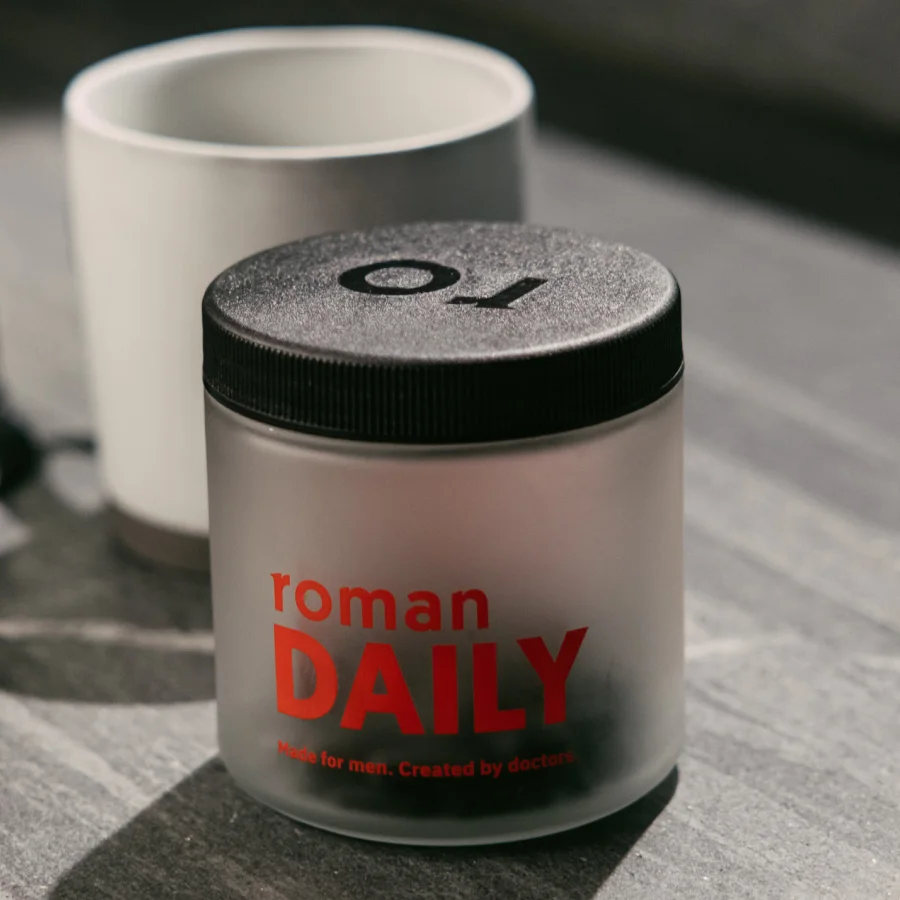Here's what we'll cover
Here's what we'll cover
As we get older, many people start to lose the excitement about their upcoming birthday as the effects of aging start becoming more obvious. Lower energy levels, problems remembering important dates or where you left your keys, and new health concerns start creeping up over the years.
While you can’t go back in time, scientists have found a coenzyme that may be key to keeping the signs of aging at bay.
What is NAD+?
NAD+ is one form of the coenzyme nicotinamide adenine dinucleotide (NAD). Coenzymes are organic compounds or molecules used in the body to help enzymes initiate reactions or functions. They can aid reactions that are part of digestion, cell growth, energy metabolism, or other important roles in the body.
The body makes NAD+ from enzymes, amino acids (proteins), and vitamins you eat, such as (Mehmel, 2020):
Tryptophan
Aspartic acid
Niacin, also called vitamin B3
The amount of NAD+ your body produces naturally starts to decline as you get older. This may lead to low levels and impact your health. NAD+ depletion is associated with health conditions and age-related changes such as (Mehmel, 2020):
Metabolic problems, like diabetes and fatty liver disease
Cardiovascular diseases like atherosclerosis, heart failure, heart attack, and high blood pressure
Neurodegenerative conditions, like Alzheimer’s disease and Parkinson’s disease
Mental health disorders, like depression and cognitive deficits
NAD+ vs. NADH
NAD+ and NADH are two versions of the same compound, nicotinamide adenine dinucleotide.
NAD+ represents the oxidized form of NAD, meaning it has lost or dropped off an electron. This type of reaction with gaining and losing an electron is called a redox reaction.
NADH represents the reduced form of NAD, meaning it has regained the lost electron and is ready to transport it to a different molecule. The letter H in the acronym stands for hydrogen and represents the more active form of NAD.
NAD molecules frequently switch back and forth between these two forms as they move electrons around for metabolic reactions. Imagine NAD+ as an empty taxi cab, waiting to pick up a passenger (the electron). Once the passenger is picked up, it becomes full (NADH) and moves to take the passenger to its destination (the next reaction).
Some experts believe the ratio of NAD+ molecules to NADH molecules is just as important, if not more so, than the amount of total circulating NAD+. The ratio appears to decline with age, with the number of NAD+ decreasing and NADH increasing. A good balance may play a role in gene expression and DNA binding (Anderson, 2017).
What does NAD do?
NAD+ carries electrons from one molecule to another to help facilitate reactions and metabolic processes in the body. It plays an important role in energy metabolism and healthy cell function.
NAD and mitochondrial function
NAD+ is essential for mitochondria—the part of cells that turns the nutrients from food into energy—to function properly.
The mitochondria use the redox reaction of NAD+ and NADH for both anaerobic (without oxygen) and aerobic (with oxygen) metabolism. Examples of metabolism processes that use NAD are the phosphorylation of adenosine triphosphate (ATP) and glycolysis (Mehmel, 2020).
As NAD+ levels decline from aging, the mitochondria may become damaged or not perform as effectively. Mitochondrial dysfunction may lead to symptoms like (Kanungo, 2018):
Fatigue and tiredness
Weakness and low endurance when exercising
Stunted growth
Blindness and hearing loss
Low blood sugar and diabetes
Learning problems and changes in cognitive function
Seizures
Stroke-like activity
Heart, kidney, and liver diseases
Increase psychiatric symptoms
NAD and sirtuins
Sirtuins are a group of proteins that turn genes on and off, repair DNA, protect cells from age-related changes, and regulate other metabolic pathways in the body. Research suggests that NAD+ regulates the activity of sirtuins, and changes in NAD levels impact their function.
Here are the different roles of the seven types of sirtuins (Mehmel, 2020):
SIRT1: Studies show that SIRT1 activation helps support DNA repair, glucose metabolism, and insulin production (may protect against diabetes), and protect nerve cells and blood vessels.
SIRT2: Supports healthy fat tissue, blood glucose homeostasis (balance), and nerve health
SIRT3: Supports ATP production, DNA repair, protects against DNA damage, protects neurons, and suppresses tumors
SIRT4: Regulates insulin secretion, DNA repair, and cell death
SIRT5: Helps remove waste, supports ketone production and the urea cycle
SIRT6: Supports DNA growth and repair, cholesterol metabolism, and glucose metabolism
SIRT7: Supports healthy DNA and RNA transcription, and protects heart health
In addition to NAD precursors, other compounds, like antioxidants, may act as activators for NAD production. Studies suggest that the antioxidant resveratrol helps activate NAD+ production, SIRT3, and SIRT5 (Kane, 2018).
Benefits of NAD+ supplements
Maintaining healthy NAD+ may be an important step in slowing down age-related diseases and health changes. Although more research is needed to truly understand the impact of NAD metabolism, there is some research to suggest beneficial effects like:
Increased brain health and memory
The body uses cellular NAD when repairing DNA and nerve cells. Changes in memory and cognitive function are common complaints as people get older. Some research suggests maintaining NAD+ levels helps to slow down and prevent the age-related memory and cognitive changes that many people experience. NAD supplements may support healthier brain function throughout the lifespan (Lautrup, 2019).
Increased energy
NAD+ helps support energy levels and metabolism. Because your body isn’t able to efficiently process food into energy without NAD, inadequate NAD+ levels may impact how energized you feel (Mehmel, 2020).
Improved blood pressure and heart health
High blood pressure and other metabolic conditions take a toll on the health of blood vessels and arteries. Some research shows that NAD+ supplements can help protect blood vessels, reduce inflammation, and reduce stiffness in the aortic artery (Mehmel, 2020).
Reduced cholesterol
NAD+ also protects your heart health by helping your lipid metabolism to lower cholesterol levels and decrease the risk for blocked blood vessels. Research suggests supplements with NAD+ precursors help prevent and reverse lipid accumulation. The supplements can potentially be used for treating dyslipidemia or high lipid levels (cholesterol, triglycerides, or both) (Mehmel, 2020).
Healthy weight maintenance
Increasing your NAD+ levels may help with reaching and maintaining a healthy weight. The impact NAD+ has on metabolism may partially explain some troubles people have with maintaining a healthy weight as they age. Some animal research shows that mice taking NAD+ supplements experienced less weight gain while eating a high-fat diet than those not taking NAD+ (Mehmel, 2020).
Protection against age-related conditions
Early research suggests NAD supplements may help protect against the development of neurodegenerative conditions such as Alzheimer’s disease and Parkinson’s disease. This may be from protecting cells from damage caused by oxidation and reducing inflammation (Mehmel, 2020).
Side effects of NAD supplementation
Overall, it appears that NAD supplements are safe for most people with little to no side effects. However, most clinical trials are short-term, so the long-term effects of these supplements are poorly understood.
NAD+ dosage
Many options are available for NAD+ supplements. Typically, they are created with one or more precursors to NAD+, which include:
Nicotinamide mononucleotide (NMN)
Nicotinic acid
Nicotinamide phosphoribosyltransferase (NAMPT)
The body uses these precursors to increase the amount of NAD+ circulating in the bloodstream. The best precursor and doses are still unclear and may vary for specific conditions (Mehmel, 2020).
Talk with your healthcare provider before starting a new supplement and discuss what NAD replenishment option may be best for you.
Lifestyle changes to boost NAD+ levels
In addition to NAD supplementation, you can boost your NAD+ levels through diet and lifestyle changes like:
Reducing calories: Studies suggest that calorie restriction and fasting may help preserve and increase NAD+ levels (Ung, 2021).
Eating a nutritious diet: Including dietary sources of NAD+ precursors can help stimulate its production. Some of the foods with precursors include turkey, cabbage, cucumber, edamame, and shrimp (Poljsak, 2020).
Exercise regularly: Exercise, like cardio, weight training, and HIIT workouts, helps stimulate the growth of skeletal muscles and maintain NAD+ levels (de Guia, 2019)
Wear sunscreen: NAD helps repair skin cells from damage caused by UV rays. Protecting your skin by wearing sunscreen daily helps to preserve NAD+ levels by decreasing the demand for them (Fania, 2019)
DISCLAIMER
If you have any medical questions or concerns, please talk to your healthcare provider. The articles on Health Guide are underpinned by peer-reviewed research and information drawn from medical societies and governmental agencies. However, they are not a substitute for professional medical advice, diagnosis, or treatment.
Anderson, K. A., Madsen, A. S., Olsen, C. A., & Hirschey, M. D. (2017). Metabolic control by sirtuins and other enzymes that sense NAD+, NADH, or their ratio. Bioenergetics , 1858 (12), 991–998. doi: 10.1016/j.bbabio.2017.09.005. Retrieved from https://www.ncbi.nlm.nih.gov/pmc/articles/PMC5648639/
de Guia, R. M., Agerholm, M., Nielsen, T. S., Consitt, L. A., Søgaard, D., Helge, J. W., et al. (2019). Aerobic and resistance exercise training reverses age-dependent decline in NAD+ salvage capacity in human skeletal muscle. Physiological Reports , 7 (12), e14139. doi: 10.14814/phy2.14139. Retrieved from https://www.ncbi.nlm.nih.gov/pmc/articles/PMC6577427/
Fania, L., Mazzanti, C., Campione, E., Candi, E., Abeni, D., & Dellambra, E. (2019). Role of nicotinamide in genomic stability and skin cancer chemoprevention. International Journal Of Molecular Sciences , 20 (23), 5946. doi: 10.3390/ijms20235946. Retrieved from https://www.ncbi.nlm.nih.gov/pmc/articles/PMC6929077/
Kane, A. & Sinclair D. A. (2018). Sirtuins and NAD+ in the development and treatment of metabolic and cardiovascular diseases. Circulation Research, 7 (123), 868-855. Retrieved from https://www.ahajournals.org/doi/10.1161/CIRCRESAHA.118.312498
Kanungo, S., Morton, J., Neelakantan, M., Ching, K., Saeedian, J., & Goldstein, A. (2018). Mitochondrial disorders. Annals Of Translational Medicine , 6 (24), 475. doi: 10.21037/atm.2018.12.13. Retrieved from https://www.ncbi.nlm.nih.gov/pmc/articles/PMC6331360/
Lautrup, S., Sinclair, D. A., Mattson, M. P., & Fang, E. F. (2019). NAD+ in brain aging and neurodegenerative disorders. Cell Metabolism , 30 (4), 630–655. doi: 10.1016/j.cmet.2019.09.001. Retrieved from https://www.ncbi.nlm.nih.gov/pmc/articles/PMC6787556/
Mehmel, M., Jovanović, N., & Spitz, U. (2020). Nicotinamide riboside-the current state of research and therapeutic uses. Nutrients , 12 (6), 1616. doi: 10.3390/nu12061616. Retrieved from https://www.ncbi.nlm.nih.gov/pmc/articles/PMC7352172/
Poljsak, B., Kovač, V., & Milisav, I. (2020). Healthy lifestyle recommendations: do the beneficial effects originate from NAD+ amount at the cellular level?. Oxidative Medicine And Cellular Longevity . doi: 10.1155/2020/8819627. Retrieved from https://www.ncbi.nlm.nih.gov/pmc/articles/PMC7752291/
Ung, T. P. L., Lim, S., Solinas, X. Mahou, P, Chessel, A., Marionnet, C., et al . (2021). Simultaneous NAD(P)H and FAD fluorescence lifetime microscopy of long UVA–induced metabolic stress in reconstructed human skin. Scientific Reports, 11 , 22171. doi: 10.1038/s41598-021-00126-8. Retrieved from https://www.nature.com/articles/s41598-021-00126-8












